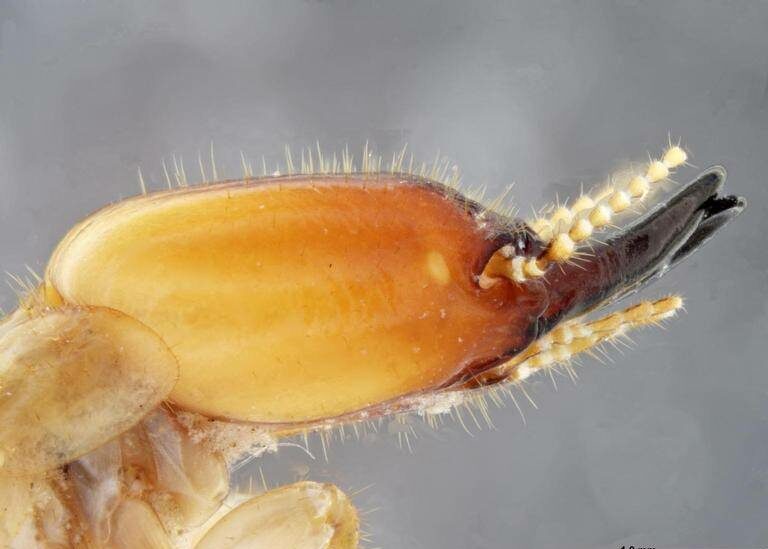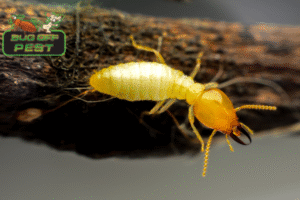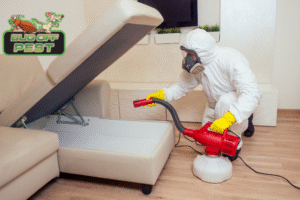Termites are known as silent destroyers. They can cause big problems for your home. You may not notice them at first, but they can do a lot of damage over time. This can lead to costly repairs. That is why regular pest control and checking for termites is very important. It can keep your property safe from termite infestations.
You should also learn the signs of termite activity. Knowing what to look out for can stop the problem from getting worse. There are many simple termite prevention tips that help protect your home. If you use these tips and take action early, you can lower the risk of termite damage. With the right pest control steps, your home stays safer, and you get peace of mind.
7 Proven Termite Control Tips to Keep Your Home Safe
Termites can cause lots of problems for homeowners. They damage many houses every year. To keep your home safe, you need to know how to stop them before they cause trouble. If you see mud tubes or termite droppings, it could be a sign of termites in your house. Finding these early can help you take action right away and control a pest problem.
These termite prevention tips talk about pest management ideas that can really help. You should seal up cracks and holes where the pests can get inside. Make sure you do not have excess moisture in your home, since termites like wet places. It is also a good idea to use termite-resistant materials when you build or repair your house. All of these steps play a big part in keeping termites away.
Inspect Your Home Regularly for Signs of Termites
Regular inspections are key in finding early signs of termites before they cause big damage. You should look for mud tubes on the walls or around the foundation. These are how termites get to the wood. If wood sounds hollow when you knock on it or you see blistered parts, these are signs that termites might be inside your home’s structure.
Use things like a flashlight and a screwdriver to help check places like crawl spaces and basements well. Try pressing your thumb or lightly tapping the wood that looks odd. If it sounds hollow or feels soft, this could mean termite damage.
Check for termite droppings, which are called frass. They look like rough sawdust and can turn up close to furniture that has termites. When you do regular inspections, it helps you spot a problem fast and gives you time to use good pest control. This way, you can catch termites early, which lowers the chance of costly repairs.
Eliminate Excess Moisture in and Around Your Home
Termites do well in places with a lot of moisture. This is why moisture control is very important if you want to stop termites. You should fix water leaks and take care of any moisture sources in your home to lower the risk of termite infestation. Check places like bathrooms, kitchens, and crawl spaces for water that piles up from time to time.
It is good to have proper drainage systems to move water away from your house. Make sure you repair gutters, downspouts, or any leaking pipes. All these could help make a place for termites if you do not fix them. Air conditioner units make water from condensation, so they also need a clear path for water to drain out.
You should also use moisture barriers and have good ventilation in crawl spaces and attics for dryness. When your home stays dry, you keep away excess moisture and stop termites as well as moisture damage to wood structures. All of these steps make your home less likely to have pests and can help give you a strong way to guard against any infestation.
Seal Cracks and Entry Points in the Foundation
Small openings in the foundation let termites into your home. So, you need to spot and seal these cracks for good termite control. Check for any gaps near the windows, pipes, and door frames when you do an inspection.
You can use all-weather sealants, like epoxy or caulk, to block these points where termites might get in. Chemical barriers are also good as they stop termites from getting through weak spots in your foundation. Make sure you seal places where people often go, like basement floors or utility rooms, as they wear out faster.
For strong pest management, it is important to keep your foundation sealed. You should do this on a regular schedule. This routine helps stop termites from coming back. If you shut off those ways in, you protect your home’s wooden furniture and other things from damage. When you take steps early, you keep termites and other pest problems away.
Store Firewood and Lumber Away from Your House
Keeping things with a lot of cellulose, like firewood and lumber, close to your home can raise the chance of termites getting in. Termites eat these things, and if you leave them near your house, the pests can easily move inside.
Keep firewood at least 20 feet away from your home.
Put lumber and mulch in piles up and off the ground so termites have a harder time getting to them.
Get rid of old wood or tree stumps right away so that you are not giving termites an easy meal.
Check firewood piles often for any signs that termites are living there. If there are termites outside, it is likely they may move into your walls or flooring. By following this simple way of pest control, you will help protect your house from termites and keep your home strong for a long time.
Maintain Proper Ventilation in Crawl Spaces and Attics
Crawl spaces and attics can keep in too much humidity. This makes them a good place for termites. The best way to keep moisture down is by having enough ventilation. Put vents in crawl spaces. You can also use dehumidifiers to help keep the air moving and hold the humidity at the right level.
When you let dampness go on for too long, you often get mildew, rot, and moisture damage on the wooden parts of your home. This kind of place is perfect for termites. You should not let these things go unanswered. Fix them fast so termites and other pests will not start living by your home’s walls and foundation.
Some important termite prevention tips are to check the vents often, and make sure nothing is blocking them. A dry and breezy space will make termites look for another place to go, and helps your entire home stand strong over the years. Good airflow is needed not just for pest management and termite prevention, but also for keeping your home in the best shape
Schedule Annual Professional Termite Inspections
Professional termite inspections are a key part of good pest control. The pest control experts can find termite problems that you might not see yourself. When you schedule a yearly inspection, you get peace of mind. You also avoid costly repairs that could come later.
Pest control pros do more than just find termites. They also give free estimates for treatment plans. These plans are made for your home’s needs. With their know-how, they help you fix termite problems in crawl spaces and around wood structures. They know where to check and what to do to keep these areas safe.
Getting yearly inspections on time helps keep your home strong. If you spot termite trouble early, you avoid big stress, serious damage, and costly extermination fees. This gives homeowners a way to use pest control that really works.




